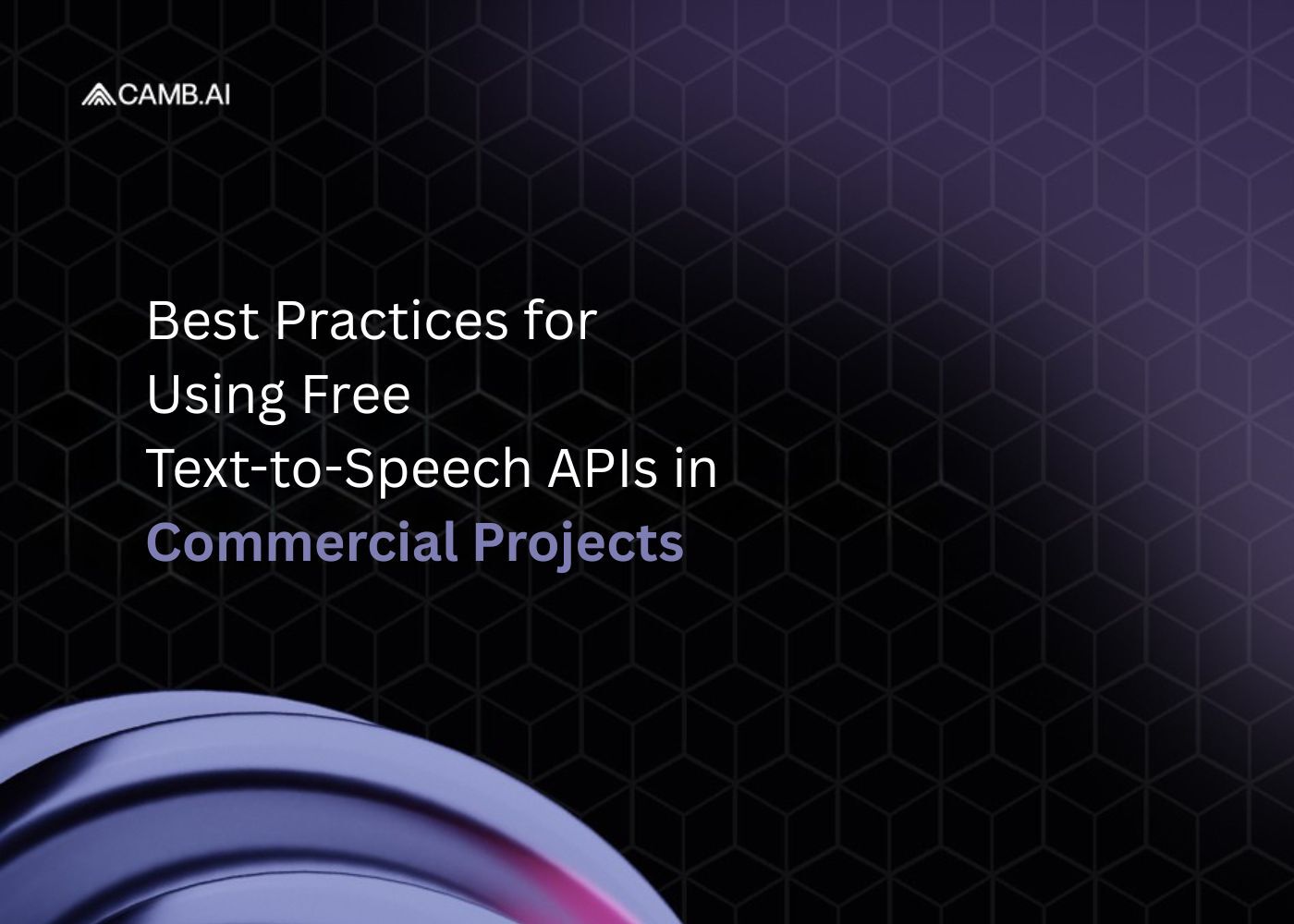Speed up localization with AI dubbing. Sync scenes, clone voices, and dub films across 140+ languages using voiceover and dubbing tech.

If you're producing YouTube content, live sports commentary, marketing voiceovers, or even accessibility solutions for apps, your usage might qualify as “commercial” under most API agreements. Relying on the wrong free TTS commercial use tool—or using the right one in the wrong way—could expose you to takedowns, monetization issues, or worse, legal claims.
But the good news?
You can absolutely build commercial projects using free text-to-speech APIs, if you do it the right way.
(Read more about our article on Best Free Text-to-Speech AI APIs.)
You’re in the commercial zone if:
Whether you’re a solo creator dubbing Instagram reels or a studio preparing localized trailers, free TTS commercial use hinges on two things: license terms and scale.
A “free” tier is rarely unlimited. Most text-to-speech APIs use a freemium model, where you get a capped amount of usage (characters, minutes, or API calls) before hitting a paywall. That cap might be:
But even within those allowances, most free licenses explicitly forbid commercial deployment. Some platforms require upgrading to a paid tier before public distribution, others offer a free commercial tier with attribution or watermarking.
Always check the Terms of Use for keywords like “non-commercial,” “redistribution,” “resale,” or “derivative works.”
If the terms allow unrestricted use, you’re good. If not, consider applying for a commercial license or switching to a paid plan before distribution.
Don’t feed raw text into your TTS pipeline. Normalize it first:
This simple preprocessing step dramatically improves voice quality and consistency across languages.
You don’t need to reprocess repeated voice lines like “Thanks for watching” or “Welcome back.” Instead:
This is essential when building interactive bots, tutorials, or games that reuse dialogue frequently.
Speech Synthesis Markup Language (SSML) gives you advanced audio control:
Used right, SSML helps make your TTS output feel far less synthetic—and far more engaging.
Most providers throttle or charge extra if you go over quota. Build in warnings before that happens.
If your app or content starts growing—and especially if revenue enters the picture—it’s time to transition. Free APIs are great for prototyping, testing and small launches. But they rarely offer:
Plan ahead. Once you’re reaching real audiences, even $50/month for TTS will often be recouped in a single branded video or ad.
At Camb, we understand the high-stakes game creators and broadcasters play with audio. That’s why we provide high-fidelity voice synthesis across 140+ languages, ideal for dubbing, voiceovers, and accessibility—even at scale.
With our MARS model, you can recreate your own voice in other languages using just 2–3 seconds of reference audio—perfect for podcast hosts, athletes, or content creators.
If you're testing before going global, our tools let you prototype and evaluate voice performance across languages without upfront cost. When you're ready to scale, our commercial-grade licensing ensures your usage stays protected.
👉 Try your first multilingual dub on Camb Studio
→ Not all free TTS tools allow commercial use—check license terms before launching
→ Preprocessing text, using SSML, and caching responses improves quality and cost-efficiency
→ API limits apply—plan for scale early if you're monetizing content or building apps
→ Free TTS commercial use is possible if usage stays within license and quota
→ Camb AI supports high-quality multilingual dubbing for creators and studios needing scale
That depends on the provider. Some APIs allow limited commercial use under the free tier, others require upgrading. Always check the specific licensing terms.
Not unless the license explicitly allows it. Commercial redistribution typically requires a paid tier or explicit permission.
Use caching for repeated phrases, preprocess text to minimize output length, and monitor your usage dashboard. Consider switching to batch processing where possible.
Some providers automatically charge overages; others throttle access. Plan for growth by choosing a scalable plan or using alerts to manage usage.
Camb AI’s MARS model delivers emotionally rich, voice-consistent speech across 140+ languages. It’s built for commercial use from the ground up—and used by global sports leagues and filmmakers. See case studies here
Whether you're a sports and media professional or simply passionate about AI’s impact on improving content accessibility, this newsletter is your go-to guide for valuable insights and updates
News, insights, and how-tos; find the best of AI speech and localization on CAMB.AI’s blog. Stay tuned with industry leaders.